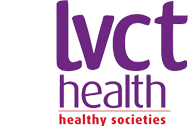Bangladesh is an informal settlement in Nairobi. At the Bangladesh Community Health Unit, Mary Achieng gave birth to a bouncing baby boy, Michael Baraka, on 8.12.2016 weighing 4.1 kilograms. BCG and birth polio vaccinations were administered on the day of birth and they were given their next appointment a month later. Josephine, however, did not take the baby for the next appointment.
The Community Health Volunteer (CHV) had not been checking the mother-child booklet during her home visits and reported zero defaulters on child immunization among the households she was responsible for. In the same Community Health Unit, Mary Gideon missed her Antenatal Clinic appointment and the CHV was not aware and reported no defaulters for Antenatal Clinic visits. Both cases demonstrate how data quality is very easily compromised.
Trust in healthcare data begins with the accuracy and completeness of the data captured at household level. This should be collected by CHVs in official data collection and reporting tools. The quality of data should be of concern during the collection, analysis, and storage stages. Ensuring that data is trustworthy is part of ensuring quality in healthcare which is defined as the success of the health services in meeting the health-related needs of the population in a manner that is consistent with local goals and resource constraints.
Quality improvement (QI) is the approach used to achieve quality and is a component of performance management that involves continuous and cyclic processes for identifying gaps and implementing interventions to solve challenges. QI in healthcare can therefore be used as an approach aimed at achieving success in health service provision by meeting the needs of populations, promoting equity, and improving outcomes.
High quality data allows us to track change and is vital in community health to enable evidence based decision making with respect to problem identification gaps in performance of community health services and procurement of resources. In order for this to happen in community health services, regular collection of quality data by CHVs is needed.
Unfortunately, data quality is a gap in community health services in Kenya. In the REACHOUT programme, CHVs have reported that they often do not have the official Ministry of Health reporting tools; this makes them resort to using notebooks and other paper records. This compromises the quality of data because CHVs collect data irregularly and there is potential for the loss of data. There is also minimal supervision of CHVs which denies them the opportunity for capacity building and to talk things through when they have problems. Many CHVs lack training and have not received the CHV standard training package. The issue of high turnover of CHVs due to poor motivation affects household coverage, as there are not enough CHVs to cover all the people that they should. Finally, the voluntary nature of CHVs’ work sometimes causes their level of commitment to be questionable and the pressure often makes them fabricate data just to meet the expectation of writing reports as shown by this quote from the REACHOUT study
“…from the Data Quality Analysis I would clearly tell that some of them don’t understand the indicators; that was very apparent and I could also tell that some of them were cooking data because if you look at some data for three months, they have just been changing a two to a three; a three to a two or a one to a one.” (Sub County Health Records Officer)
The REACHOUT project has been working to maximize the equity, efficiency, and effectiveness of community health services. This has included providing CHVs with the tools that they need to do their job and training them in how to fill them in. They have also sensitized the community to the importance of record keeping and now enlightened community members keep the booklets handy whenever CHVs visit to see how they are faring. REACHOUT has also worked with health staff to improve supervision and assess the quality of the data that is being collected.
It is hoped that by embracing a culture of quality, community health service providers will appreciate the need for good quality data that they can use to make better decisions about services. High quality data at the community level should result in the integration of community health services with the rest of the health system.
The community serves as the foundation of health care giving and seeking and by supporting community health workers to collect and use data they can improve the quality of health care for all.
This article was first published at CHWCentral http://www.chwcentral.org/community-health-data-important-first-step-ensuring-good-quality-services-all-1
By Lynda Keeru

1 Comment
0723769922
Comments are closed.